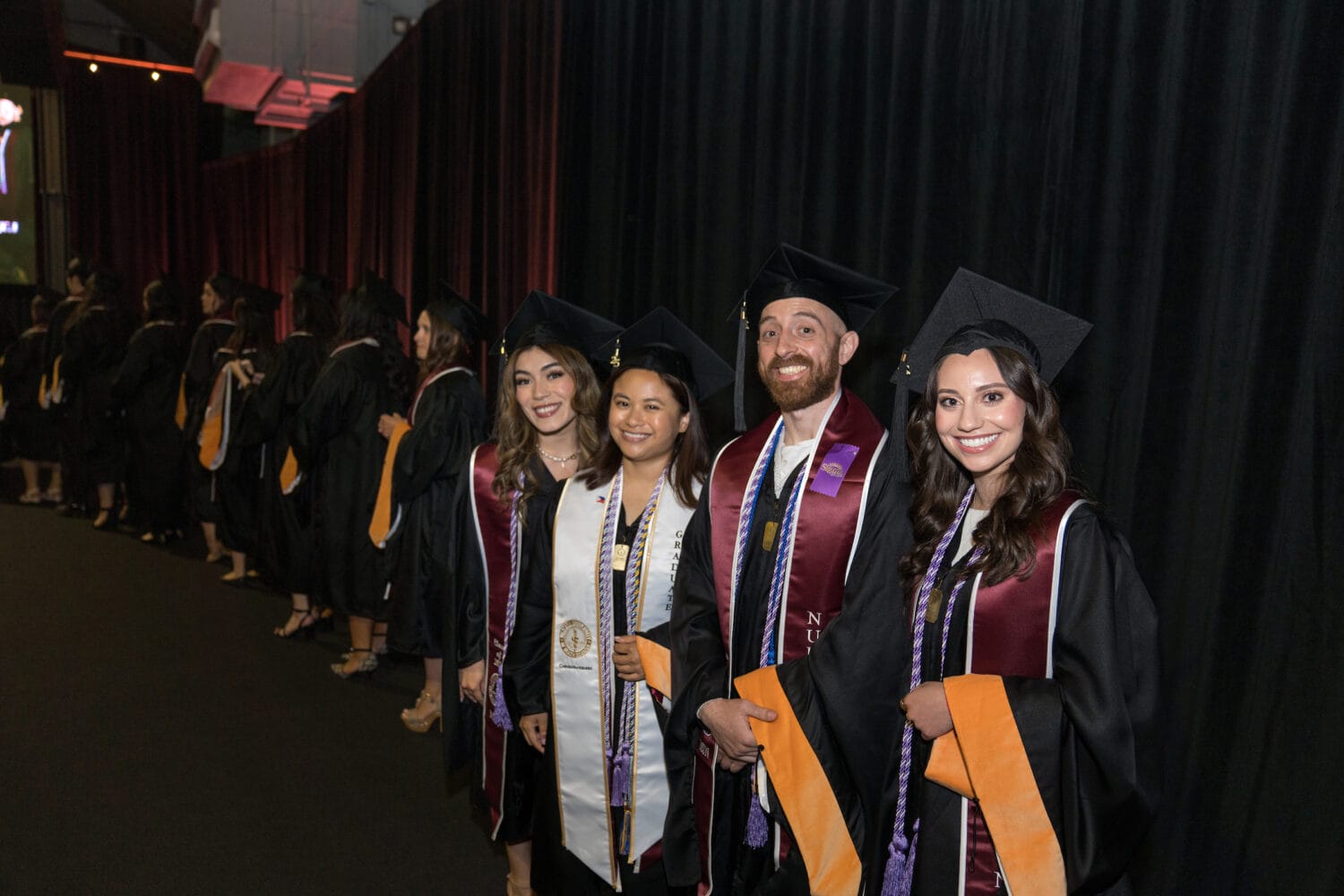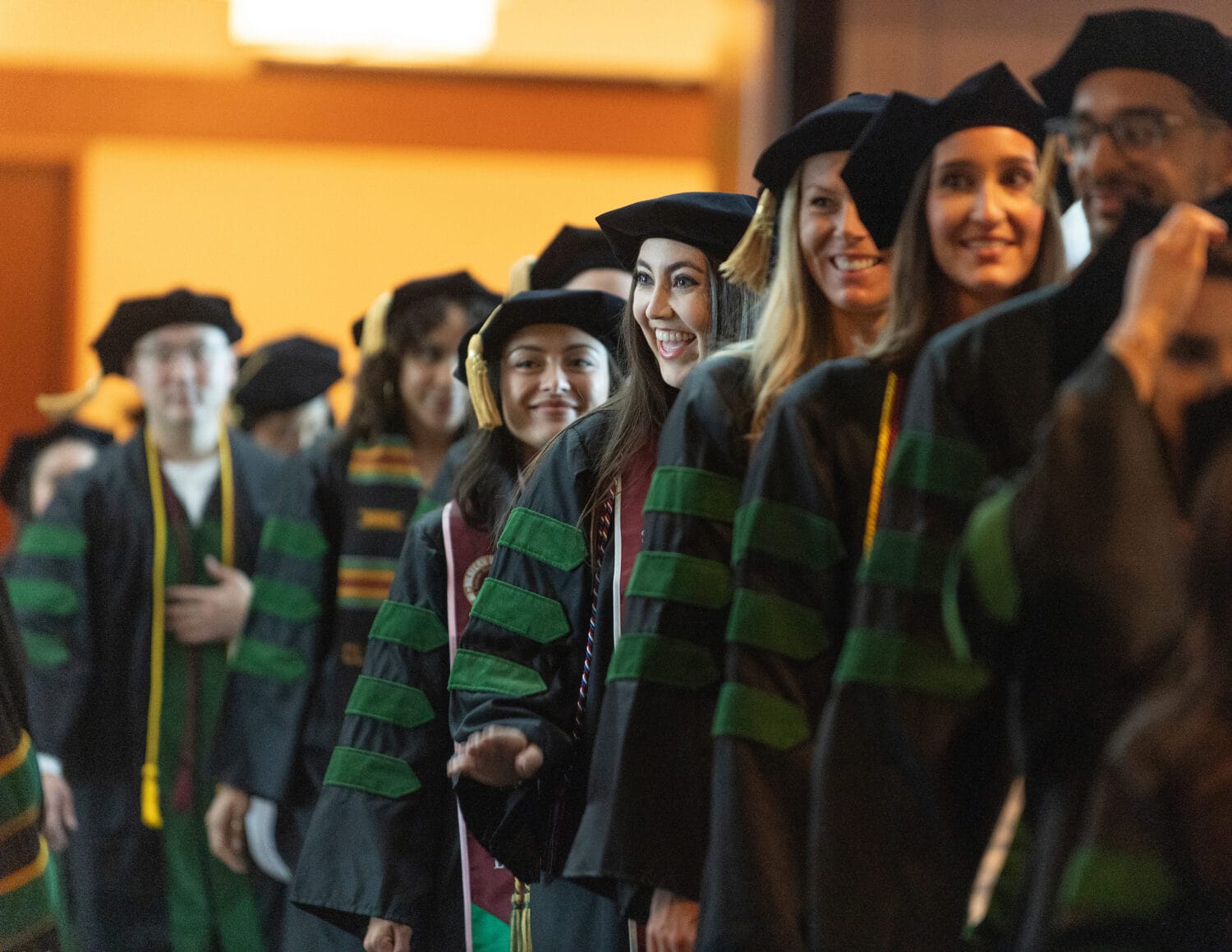A patient-centered lesson at WesternU
Janice Dushane suffered devastating injuries after her car uncontrollably accelerated and she slammed into a concrete building in May 2010.
Her family’s advocacy for her recovery is inspirational and provides important perspective for faculty and students at Western University of Health Sciences. Janice, her husband Robert and their daughter Jenniffer, who graduated from WesternU’s Physical Therapy program in 1997, recently shared their story with an interprofessional group of WesternU faculty and staff.
Robert and Jenniffer wrote a blog detailing Janice’s recovery. Robert then decided to write about their experiences in a book, “Four Stones,” which was published earlier this year. Click here to read more about the book: http://robertdushane.com/
Janice suffered multiple compound fractures, broken ribs, facial lacerations and severe brain trauma. Robert’s big area of concern was while Janice was receiving subacute care, which is defined by the California Department of Health Care Services as “care that does not require hospital acute care, but more skilled nursing care than is provided at a skilled nursing facility.” The nurses assigned to her also had other patients to care for and could not watch her every minute.
“It’s almost a misnomer. The subacute is the acute, and the acute is the subacute. There was so much more danger in her life when she was in subacute care,” Robert said. “The first major decision that really saved her life was she would never be left alone. Having some presence always there is really important.”
Robert stayed with Janice and hired someone to watch her when he couldn’t be there or when he was sleeping. Every day, he would ask Janice to squeeze his fingers. Nothing happened at first, but they slowly reached new milestones: sitting upright in bed, hearing her own voice and bearing her own weight.
“These milestones were plateaus that allowed her to go to the next level,” Robert said. “Unless you push for those levels, push to make her talk, to hear her own voice, if you don’t do these things, you don’t get the result. I think we got the result because we were always there and always on top of it. She was never, ever alone.”
The policies for care reimbursement did not fit Janice’s needs as a patient, said Jan Boller, PhD, RN, College of Graduate Nursing Director of the DNP Program and Health Systems Leadership.
“We need to inform policy makers so that reimbursement is more congruent with the level of care needed for patients to recover from major illness or trauma,” Boller said. “Janice needed higher-level transitional care as she moved from acute care. Her family filled that gap and provided that care for her, but not every family has this option.”
Janice still has medical issues, including loss of short-term memory, and she averages two doctor’s visits per week, Robert said.
“She’s not who she was before, but you play the cards you’re dealt,” he said. “Forget what you had before. It’s not there anymore. Maximize what you have now.”
Jenniffer helped take care of her mother and also made sure her father slept and did not endanger his own health.
“As wonderful as all the health care workers were, the family does know their loved one in a different way,” Jenniffer said. “As a clinician you have a lot of patients. It’s not that you don’t care for them, but it’s different as a family member.”
“They go home and you don’t,” Robert said.
“We were very lucky in a lot of ways. We had access to health care that a lot of other people don’t have,” Jenniffer said. “We had knowledge of what my mom needed. We had resources to have people come help us. My mom did get a lot better with a lot of hard work. She’s the true star in this. It took a village to make this happen.”
“My family saved my life,” Janice said. “They were just amazing.”
Getting to know a patient and understanding their interests and goals is important, said Dee Schilling, PT, PhD, chair and associate professor for the Department of Physical Therapy Education in the College of Allied Health Professions.
“That’s what we have to remember. That’s what we have to teach our students,” she said. “Yes, you have a picture of the status quo of where you can go, but you need to know where that patient wants to go. You need to know who the patient really is.”
A physical therapist may work with a patient for 30 minutes, but that session alone will not provide results.
“It has to be ongoing. It’s around the clock. No health care professional can do that, but family members are doing that,” Schilling said. “There’s no reason we can’t entrust family members to do these tasks.”
The Dushane family took care of each other, which resulted in a better outcome.
“All of us at this institution really strive to make sure our students graduate knowing you’re not just treating a knee or a hip, it’s the whole human being, and beyond that whole human being they bring with them a whole family, a whole support structure,” Schilling said. “I think that’s unique to this institution. You and your family represent that, and how that works, and how that makes a difference.”
College of Osteopathic Medicine of the Pacific Assistant Professor Marcel Fraix, DO, FAAPMR, told the Dushanes they have a heartwarming story, and he would like more patients to hear it.
“When I’m faced with talking with a family in these types of situations, they don’t see the bigger picture. They don’t see how long it’s going to take,” Fraix said.
Students ask him why he got into the field of physical medicine and rehabilitation, since he deals with so much apparent tragedy and trauma.
“You have to be a master at delayed gratification,” Fraix said. “You have to be willing to say to yourself, ‘I’m going to see this patient in two years, and hopefully they’ll get the majority of their life back.’ And you have to be an advocate for that, and keep reminding them that it will get better.”
Robert took Janice back to the hospitals where she recovered so the physicians, nurses and therapists who took care of her shortly after her accident could see how far she’s come.
“Everyone was wowed. It was good for them. Rehabilitation centers see patients walk out the door. When you’re in acute ICU, you don’t see that. They all contributed to (her recovery),” Jenniffer said.
Robert suggested to WesternU faculty that they teach students the patient side of family care and have students advocate for patients. He also wanted to emphasize that this difficult road was worth the trip.
“I couldn’t have lived with myself if I didn’t go through that struggle, no matter what the result was,” he said. “The struggle is always worth it.”
He offered to share his story with students, other faculty and policymakers. Dr. Boller said she wants to organize a university-wide lunch talk with the Dushanes. Boller is also The Fletcher Jones Foundation Endowed Chair for Nursing Quality and Safety, which is why she organized this lunch discussion.
“It is going to take us all working together,” Boller said. “Telling your story can help patients, families, professionals and policy makers look at health care in a different way.”
Robert and Janice have celebrated 16 birthday parties for their four granddaughters since the accident.
“That’s so important for anybody who goes through a tragedy, is to try to figure out where the silver linings are and how to go on with your life,” Robert said.



